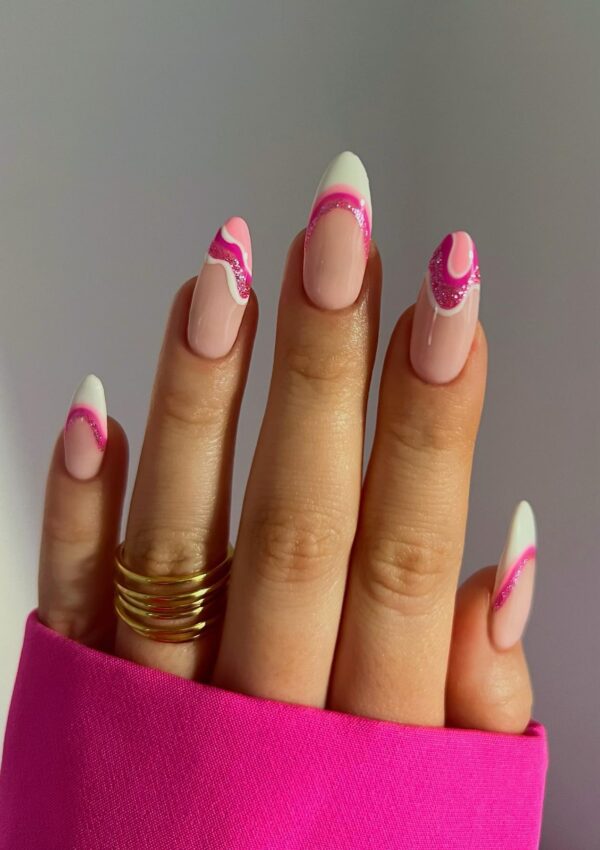In today’s fast-paced world, where consumerism often overwhelms our spaces and minds, the concept of minimalism emerges as a breath of fresh air. Minimalism, at its core, is about stripping away the unnecessary, focusing on what truly matters, and finding joy and fulfillment in simplicity. It’s not just about having fewer possessions; it’s about freeing yourself from the constant desire for more, enabling a life filled with purpose, clarity, and contentment.
The benefits of adopting a minimalist lifestyle are profound and multifaceted. By choosing to declutter your life, you embark on a journey toward reduced stress, as a decluttered space reflects a more organized mind. This simplicity translates into more time and energy to focus on your health, relationships, and passions. Financially, minimalism encourages spending on experiences rather than accumulating goods, leading to increased savings and less financial burden. Furthermore, embracing minimalism can result in more freedom as you detach from the endless cycle of buying, storing, and maintaining a plethora of items. Instead, you invest in experiences and relationships that enrich your life in meaningful ways.
The purpose of this post is to guide you through 50+ practical ways to declutter your life and embrace minimalism. Whether it’s your physical space, digital environment, finances, or time management, this comprehensive list aims to provide actionable steps to help you simplify various aspects of your life. From adopting a capsule wardrobe to digitizing documents, from simplifying your meal plans to mindful living practices, each suggestion is designed to help you embark on or continue your minimalist journey. Let’s explore how to cultivate a life of less, yet one that is infinitely richer and more fulfilling.
Decluttering Your Physical Space

The journey to declutter your life begins in the tangible spaces we occupy – the places where we live, work, and spend most of our time. Transforming these areas into minimalist sanctuaries not only enhances their aesthetic appeal but also improves functionality and reduces stress. Let’s dive into practical strategies for decluttering both your home and workplace, setting the foundation for a more minimalist lifestyle.
Home
1. Start with a room-by-room decluttering challenge.
Tackle your living spaces one at a time to avoid feeling overwhelmed. This methodical approach allows for more thorough sorting and decision-making, ensuring that each room is thoughtfully curated.
2. Implement the one-in, one-out rule.
To maintain a decluttered home, adopt the policy of removing an item for every new one brought into your space. This rule helps keep possessions to a minimum and discourages unnecessary accumulation.
3. Use the KonMari method for clothes, books, and belongings.
Marie Kondo’s famous method encourages keeping only those items that “spark joy.” This selective process ensures that every item in your home has value and purpose, contributing to a more joyful living environment.
4. Digitize physical documents and photographs.
Reduce paper clutter by scanning documents and photographs. Digital copies are easier to organize, access, and back up, freeing up physical space and reducing the risk of loss or damage.
5. Donate items you haven’t used in the past year.
Items not used in the last year are unlikely to be needed in the future. Donating these items can declutter your space and benefit others.
6. Organize a garage sale for unwanted items.
A garage sale is a great way to declutter and earn some extra cash. It’s an opportunity to rehome items that no longer serve you but could be valuable to someone else.
7. Use storage solutions that double as furniture.
Opt for furniture with built-in storage to maximize space efficiency. Items like ottomans with storage, beds with drawers, or benches with hidden compartments help keep your home organized and clutter-free.
8. Embrace a capsule wardrobe.
A capsule wardrobe consists of a limited selection of versatile clothing items that you love and wear regularly. This approach simplifies dressing, reduces clothing clutter, and promotes a more sustainable lifestyle.
9. Minimize kitchen gadgets and utensils.
Evaluate your kitchen items and keep only those that are essential and regularly used. A minimalist kitchen is easier to clean and more enjoyable to cook in.
10. Reduce duplicates in your home.
Eliminate duplicate items to free up space. This can apply to kitchenware, tools, toiletries, and more. Keeping only what is necessary simplifies your living environment.
Workplace
11. Keep a minimalist desk setup.
A clutter-free desk promotes focus and productivity. Keep only essential items on your desk, and store everything else out of sight.
12. Digitize your work files and go paperless.
Transition to digital documents where possible. This not only reduces physical clutter but also makes information easier to search, share, and secure.
13. Schedule regular digital decluttering sessions.
Regularly organize and purge unnecessary digital files, emails, and apps. This digital decluttering keeps your virtual workspace efficient and manageable.
14. Use productivity apps to streamline tasks.
Leverage apps designed to enhance productivity, such as task managers, note-taking apps, and calendar tools. These can help keep your work organized and reduce the need for physical clutter.
15. Declutter your email inbox weekly.
Set aside time each week to sort through your inbox, deleting or archiving emails that are no longer relevant. This habit prevents email overload and keeps your digital communications streamlined.
By implementing these strategies to declutter your home and workplace, you pave the way for a more minimalist and intentional lifestyle. Each step not only simplifies your physical and digital spaces but also contributes to a mindset of living with less, ultimately leading to a life filled with more purpose, clarity, and satisfaction.
Decluttering Digital Life

In the digital age, our online presence and digital storage can become just as cluttered as our physical spaces. Taking the time to declutter your digital life can lead to improved focus, lower stress levels, and a more organized life both online and off. Here are some practical steps to streamline your digital world, helping you to lead a more minimalist lifestyle.
Social Media
17. Unfollow accounts that don’t add value to your life.
Social media should be a source of inspiration and connection, not stress or envy. Take a moment to assess the accounts you follow and unfollow those that don’t positively contribute to your day. This simple act can transform your feeds into spaces of positivity and relevance.
18. Limit social media apps on your phone.
Having fewer social media apps on your phone can significantly reduce distractions and the urge to constantly check for updates. Keep only the apps that serve a purpose for staying connected or informed, and delete the rest.
19. Schedule specific times for social media usage.
Allocating specific times of the day for social media use can help you avoid endless scrolling and ensure that your digital interactions are intentional. This habit allows you to enjoy social media without it overtaking your time.
20. Use tools to block distracting websites during work hours.
Productivity tools and website blockers can help you stay focused by restricting access to distracting websites during work or study hours. These tools can be customized to fit your schedule, promoting efficiency and helping you stay on task.
Digital Files and Storage
21. Organize digital files into clearly labeled folders.
A well-organized digital filing system makes it easier to find what you need when you need it, saving you time and frustration. Create clearly labeled folders for different areas of your life or work, and regularly archive or delete files that are no longer necessary.
22. Regularly clean out your download folder.
The download folder often becomes a dumping ground for miscellaneous files. Make it a habit to clear out this folder regularly, keeping only what you need and transferring important files to their proper place.
23. Unsubscribe from unwanted email newsletters.
Email inboxes can quickly become overwhelming with unread newsletters and promotions. Use the unsubscribe link in emails to reduce clutter and keep only the subscriptions that provide value or enjoyment.
24. Use cloud storage to keep important files.
Cloud storage services offer a convenient way to store and access important files from anywhere, reducing the need for physical storage devices. They also make sharing files easier and can serve as a backup in case of hardware failure.
25. Delete old or duplicate files.
Regularly review your digital files and delete any that are outdated, unnecessary, or duplicated. This not only frees up storage space but also makes it easier to navigate your digital environment.
By taking these steps to declutter your digital life, you’re not just tidying up your online presence and digital storage; you’re also creating a more mindful and intentional approach to how you interact with technology. Simplifying your digital world is an essential component of embracing minimalism, allowing you to focus on what’s truly important in your life.
Simplifying Finances

In the quest to declutter your life, simplifying your finances plays a crucial role. A minimalist approach to money management can not only help in reducing financial stress but also in achieving a more focused and value-driven lifestyle. Here are practical ways to streamline your finances:
26. Automate bill payments and savings.
Setting up automatic payments for recurring bills and automatic transfers to savings accounts ensures that you never miss a payment or a chance to save. This automation can help in maintaining a clean financial slate and avoiding late fees.
27. Create a minimalist budget focusing on essentials.
Craft a budget that prioritizes essential expenses, such as housing, food, and healthcare, while minimizing unnecessary spending. This approach encourages mindful spending in alignment with your financial goals and values.
28. Declutter your wallet or purse.
Keep your wallet or purse organized by removing old receipts, expired cards, and unnecessary items. This physical decluttering can also symbolize a commitment to keeping your finances straightforward and organized.
29. Sell unused items for extra cash.
Look around your home for items you no longer use or need. Selling these items can declutter your space and provide additional funds to pay off debt, save, or invest in experiences that enrich your life.
30. Consolidate bank accounts and credit cards.
Simplify your financial management by consolidating multiple bank accounts and credit cards. Keeping your finances centralized can reduce complexity and help you monitor your spending and saving more effectively.
31. Review and cancel unnecessary subscriptions.
Regularly assess your subscriptions and memberships, canceling those you no longer use or need. This reduces monthly expenses and ensures that your spending aligns with your actual consumption and interests.
Mindful Living and Wellness

A minimalist lifestyle extends beyond physical and financial decluttering, touching on the importance of mindful living and wellness. Here’s how to incorporate simplicity into your daily life for improved well-being:
32. Practice daily mindfulness or meditation.
Incorporate mindfulness practices or meditation into your daily routine to reduce stress, enhance focus, and improve mental clarity. These practices encourage living in the present moment and appreciating the simplicity of life.
33. Simplify your meal planning and shopping.
Create simple, nutritious meal plans and shopping lists to streamline your grocery shopping, reduce food waste, and focus on healthy eating. This approach can save time, money, and energy, contributing to a decluttered lifestyle.
34. Limit engagement in time-consuming hobbies.
Evaluate how you spend your leisure time, focusing on hobbies that bring you joy and fulfillment without overwhelming your schedule. This prioritization ensures that your free time truly enhances your life.
35. Prioritize quality time with loved ones.
Make intentional efforts to spend quality time with family and friends. Meaningful interactions and connections are invaluable and foster a sense of belonging and happiness.
36. Implement a simple and consistent exercise routine.
A straightforward, regular exercise routine promotes physical health and mental well-being. Choose activities you enjoy and that fit easily into your schedule, emphasizing consistency over complexity.
37. Choose experiences over possessions.
Invest in experiences that create lasting memories, such as travel, classes, or outdoor adventures, rather than accumulating material possessions. Experiences contribute to personal growth and happiness.
38. Practice saying no to reduce commitments.
Learn to say no to commitments that don’t align with your values or that overextend your time and energy. Setting boundaries is essential for maintaining a balanced and decluttered life.
39. Allocate time for self-reflection and relaxation.
Regularly set aside time for self-reflection, relaxation, and hobbies that rejuvenate your spirit. This self-care practice is vital for overall well-being and maintaining a minimalist lifestyle.
40. Embrace nature and outdoor activities.
Connecting with nature and engaging in outdoor activities can simplify life and provide a refreshing break from the digital world, enhancing physical health and mental well-being.
41. Engage in decluttering as a form of self-care.
View decluttering not as a chore but as an ongoing form of self-care. Regularly assessing and reducing possessions, commitments, and distractions can lead to a more focused, fulfilling life.
By embracing these strategies for simplifying finances and adopting mindful living and wellness practices, you can effectively declutter your life, paving the way for a more meaningful, minimalist lifestyle.
Relationships and Social Life

In the pursuit to declutter your life, it’s crucial not to overlook the social aspect, which significantly impacts our happiness and well-being. A minimalist approach to relationships and social engagements can foster deeper connections and more fulfilling interactions. Here are ways to simplify and enrich your social life:
42. Evaluate your relationships and nurture meaningful ones.
Take stock of your relationships, identifying which ones truly add value to your life. Focus your time and energy on nurturing these meaningful connections, which will result in a more supportive and enriching social circle.
43. Minimize time spent on superficial social engagements.
Instead of spreading yourself thin across numerous acquaintances or obligatory social events, choose to invest in gatherings that matter most to you. This selective approach allows for more genuine interactions and a decluttered social calendar.
44. Communicate your minimalist lifestyle to your circle.
Share your journey towards minimalism with friends and family. Explaining your lifestyle choices can help them understand your priorities and support your decisions, especially when it comes to gift-giving or planning activities.
45. Plan simple and meaningful gatherings.
When hosting events, focus on simplicity and the joy of togetherness rather than elaborate details. A simple dinner, a walk in the park, or a cozy movie night can be just as memorable as more complex arrangements.
46. Focus on quality conversations over quantity.
In your interactions, strive for depth and authenticity. Quality conversations foster stronger connections and more meaningful relationships, aligning with the minimalist principle of valuing substance over abundance.
Time Management

Effective time management is a cornerstone of a minimalist lifestyle. Simplifying how you allocate your time can lead to increased productivity, reduced stress, and more opportunities to enjoy the aspects of life that truly matter. Here’s how to apply minimalist principles to time management:
47. Use a minimalist planner or digital calendar.
Opt for a streamlined planning system that suits your needs without overwhelming you with features. A minimalist planner or digital calendar can help you focus on what’s essential, reducing the clutter of over-scheduling.
48. Set three main priorities for each day.
Each morning, determine three main tasks that align with your goals and priorities. Concentrating on these key tasks can improve focus and ensure that your most important work gets done.
49. Eliminate multitasking.
Multitasking can lead to divided attention and reduced quality of work. Focus on one task at a time to improve efficiency and effectiveness in your endeavors.
50. Batch similar tasks together.
Grouping similar tasks and handling them in designated time blocks can enhance productivity and minimize the mental clutter of constantly switching gears. This approach also helps in creating a more organized and manageable schedule.
51. Learn to delegate and outsource tasks.
Identify tasks that can be delegated or outsourced to free up your time for activities that align with your values and goals. Letting go of the need to do everything yourself is a key step in embracing a minimalist approach to time management.
By applying these principles to both your social life and time management strategies, you can declutter your life in meaningful ways. Focusing on genuine relationships, meaningful interactions, and efficient use of time not only aligns with minimalist values but also enhances overall quality of life, allowing more space for joy, fulfillment, and peace.
As we conclude our exploration of the 50 practical ways to declutter your life and embrace minimalism, it’s important to revisit the core of why this journey matters. Decluttering isn’t just about creating a more aesthetically pleasing environment; it’s about reshaping your life to focus on what truly matters. Minimalism offers a path to less stress, more freedom, and deeper joy by encouraging us to let go of the unnecessary and cherish the essential. It’s a powerful tool for transforming not just your physical space, but also your time, relationships, and mindset.
Starting on the path to minimalism doesn’t require a massive overhaul of your life overnight. The beauty of decluttering is that even small changes can have profound impacts. Begin with one drawer, one habit, or one commitment. As you experience the benefits of having less clutter and more space – both physically and mentally – you’ll likely find yourself motivated to tackle larger challenges. This gradual approach ensures the changes you make are sustainable and meaningful.
Your journey towards a minimalist lifestyle is uniquely yours, and we’d love to hear about it. Whether you’ve experienced a decluttering victory, faced challenges along the way, or discovered tips that made all the difference, your story can inspire and encourage others. Share your experiences in the comments below, and let’s build a community of support and inspiration.
If this post resonated with you, consider sharing it with friends and family who might also be looking to declutter their lives and embrace minimalism. Sometimes, a simple share can spark significant change in someone’s life, offering them the tools and encouragement they need to start their own journey towards simplicity and fulfillment.
Remember, decluttering and adopting a minimalist lifestyle isn’t about deprivation; it’s about making room for more of what truly enriches your life. Take it one step at a time, and enjoy the clarity, peace, and freedom that comes from living with less.








Leave a Reply